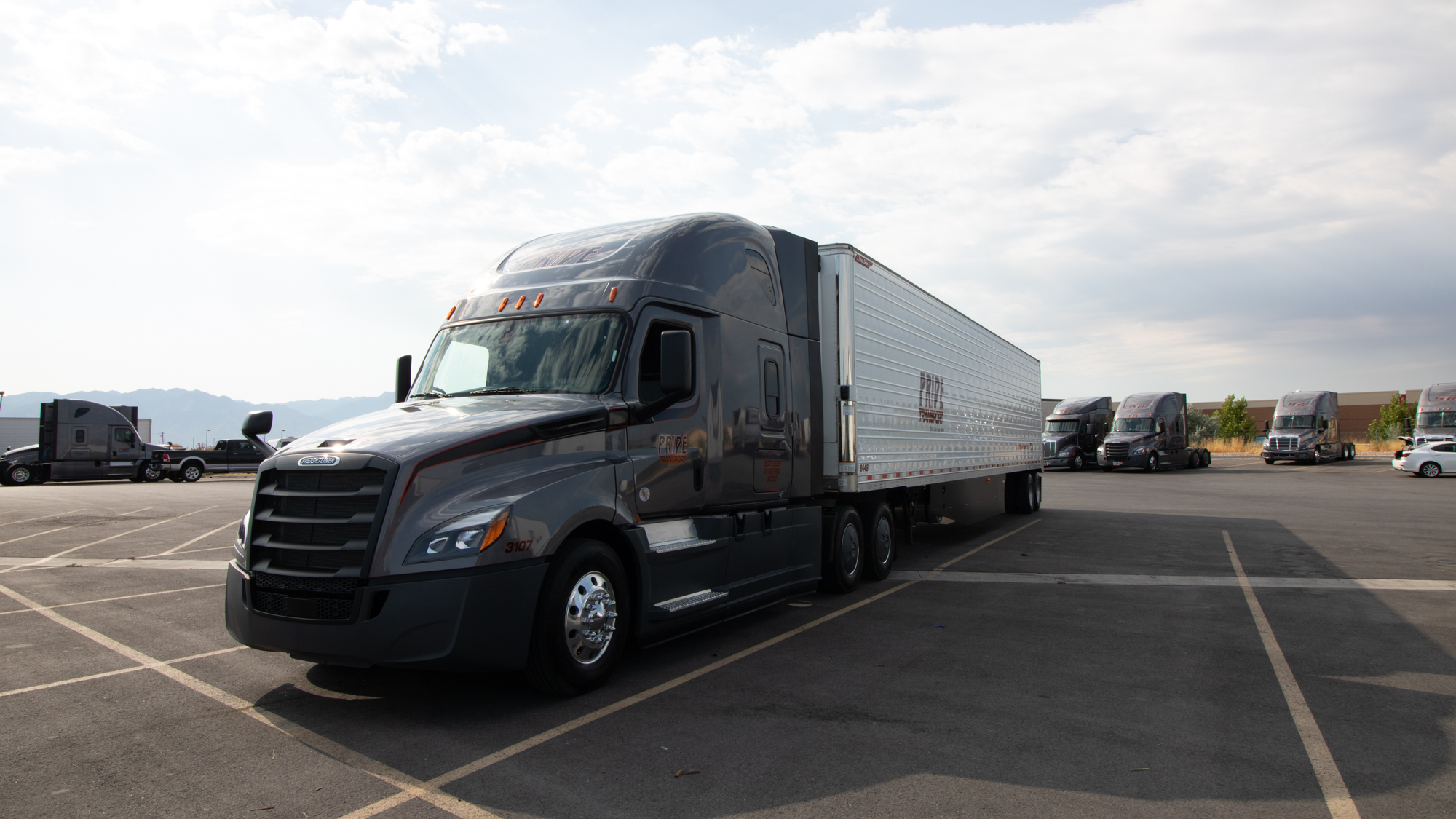by Pride Transport | Aug 11, 2023
One of the defining characteristics of OTR trucking is the time spent driving on long stretches of multi-lane highways. However, any driver with even a few months of experience will tell you that it’s not all wide open, obstacle-free spaces. Truck drivers have to constantly monitor their surroundings for other vehicles en route to their destination. But even if every other vehicle grants your truck a wide berth, infrastructure won’t always be able to do the same.
Learning the right way to maneuver in tight spaces is an important and necessary skill that will help you drive with confidence, whether you’re in a cramped loading zone, giant parking lot, or any spaces in between.
The Challenges of Driving in Tight Spaces
The most obvious risks of maneuvering a truck with limited room might go without saying, but we’ll say it anyway: without the proper skills and awareness, you could hit a person, another vehicle, or some type of permanent structure. Considering the sheer size of the average semi truck, the potential for injury and damage to property is extremely high when attempting to back up or turn a tight corner without adequate training.
Beyond the risk of potential damage, there’s also the possibility of getting stuck. In addition to damaging vehicles or property, a stuck semi truck can also cause significant delays and throw off the logistics for everyone involved. You’re off schedule, the receiving party is without a place for shipments to arrive, and other deliveries are inhibited by the truck blocking their path.
The thing is, tight spaces are everywhere, and one prime example is driving through urban areas. Maximizing real estate space in a city center means that streets, driveways, alleys, and loading/unloading areas don’t always allow for plenty of driving room. And this is just what you might encounter at your destination; to actually get into the city, truck drivers likely have to navigate a series of exit ramps, overpasses, and tunnels as well.
Drivers also run into tight corners and less-than-spacious areas in construction zones. Construction barriers, closed lanes, and road detours can all contribute to limiting the amount of space drivers have to safely navigate their vehicles. If you’re an OTR driver, you need to be ready to maneuver.

Tips for Driving in Close Quarters
A cautious, well-trained driver can operate safely in almost any situation. Strengthen your driving skill set with these tips.
Speed control
Go slow — we’re talking single-digit speeds. Slowing down gives you more time to assess the situation and make adjustments. Slower speeds also ensure that your truck isn’t gaining momentum and pushing you through the turn faster than necessary. This is especially important if your trailer is full; the extra weight could contribute to additional momentum. Decelerate before even beginning the turn to prevent loss of control or a rollover.
Use of mirrors
Using your mirrors might be even more important than usual when you’re driving in crowded city centers and need space to make a turn. Watch the traffic around you to make sure surrounding vehicles are providing enough clearance for you to make a turn, but be extra vigilant by checking your mirrors for small vehicles, motorcycles, or cyclists who may be darting around your truck as you prepare to turn.
Proper lane positioning
When making a turn, set yourself up for success by getting into position beforehand. If you’re making a right turn, get your truck as far to the left in your lane as possible without crossing into the next lane (and vice versa for left turns). When making a right turn, know that the closer you are to the curb, the longer you’ll need to pull forward before committing to the turn.
Use your signals well in advance of making the turn so other vehicles know where you’re headed; otherwise, impatient drivers may try to cut into your travel lane that they believe you’re exiting. Once you’ve committed to the turn, continue on your path, even if that means waiting for other vehicles to clear out of your way — do NOT attempt to back up and start over.
Use of spotters or backup cameras
Spotters and backup cameras can be immensely helpful in maneuvering in and around tight spaces. If you’re working with a spotter, make sure to agree on signals for “start,” “keep going,” and “stop” before beginning to drive, and make sure that person is always visible in your rearview mirror.
Even if your truck has backup cameras, it’s wise to get out of your truck and survey the area before attempting the turn. Not every situation allows for this type of planning (you can’t hop out of the cab in the middle of traffic), but in instances where you can safely walk your vehicle’s intended path, it helps to see it for yourself to reduce the chances of getting stuck.
That all being said, avoid backing up if you can. If there’s an option to approach a tight space differently, go with that. If there are no other options, aim to back up as straight as possible and avoid turning.
Anticipate obstacles
Do your best to foresee obstacles you might encounter, including overpasses and other areas where clearance might be in question. Getting stuck on a curb is one thing; getting stuck under a low bridge is another. Your GPS won’t necessarily have clearance in mind when it sets a route, so be ready to reroute if certain spaces look too questionable.
Why Preparation and Training Are Essential
As a truck driver, one of your best safety measures is the ability to stay calm in frustrating situations, which is why it’s important to prepare for these situations. There will always be narrow on-ramps, tricky exits, low overpasses, and tight turn lanes to contend with. Proper training allows you to calmly assess your next move, helping to ensure your safety (and the safety of others) in imperfect driving conditions.
Truck drivers must pass a road skills test to earn their CDL, but as a professional driver, one round of training won’t suffice for your entire career. Proactive truck drivers continue to train and take courses to keep their driving skills sharp and stay up-to-date with the latest techniques and tools designed to improve the driving experience. We do our part at Pride Transport by providing our drivers with access to training courses so they can operate their vehicles safely in every condition.
In addition to training instructors, consulting with other drivers and mentors is a good way to hone your skills and learn what to do in tight turns. Veteran truck drivers have likely had their problem-solving and safety skills tested many, many times throughout their careers. Younger drivers can benefit from their experience by asking what they did — and what they wish they hadn’t done!
If visuals help you understand certain concepts, check out the countless truck maneuvering videos on YouTube. Skilled drivers and instructors share helpful advice and demonstrations so drivers can watch, learn, and share their findings with other drivers. There are even driving simulators that can provide a general idea of how you might navigate through tight-turn scenarios.
Safety is one of the most important aspects of driver education at Pride, which is why we provide our team with the training and resources they need to travel with confidence. If you’re interested in learning more or are ready to join the Pride family, check out our open driver positions today!